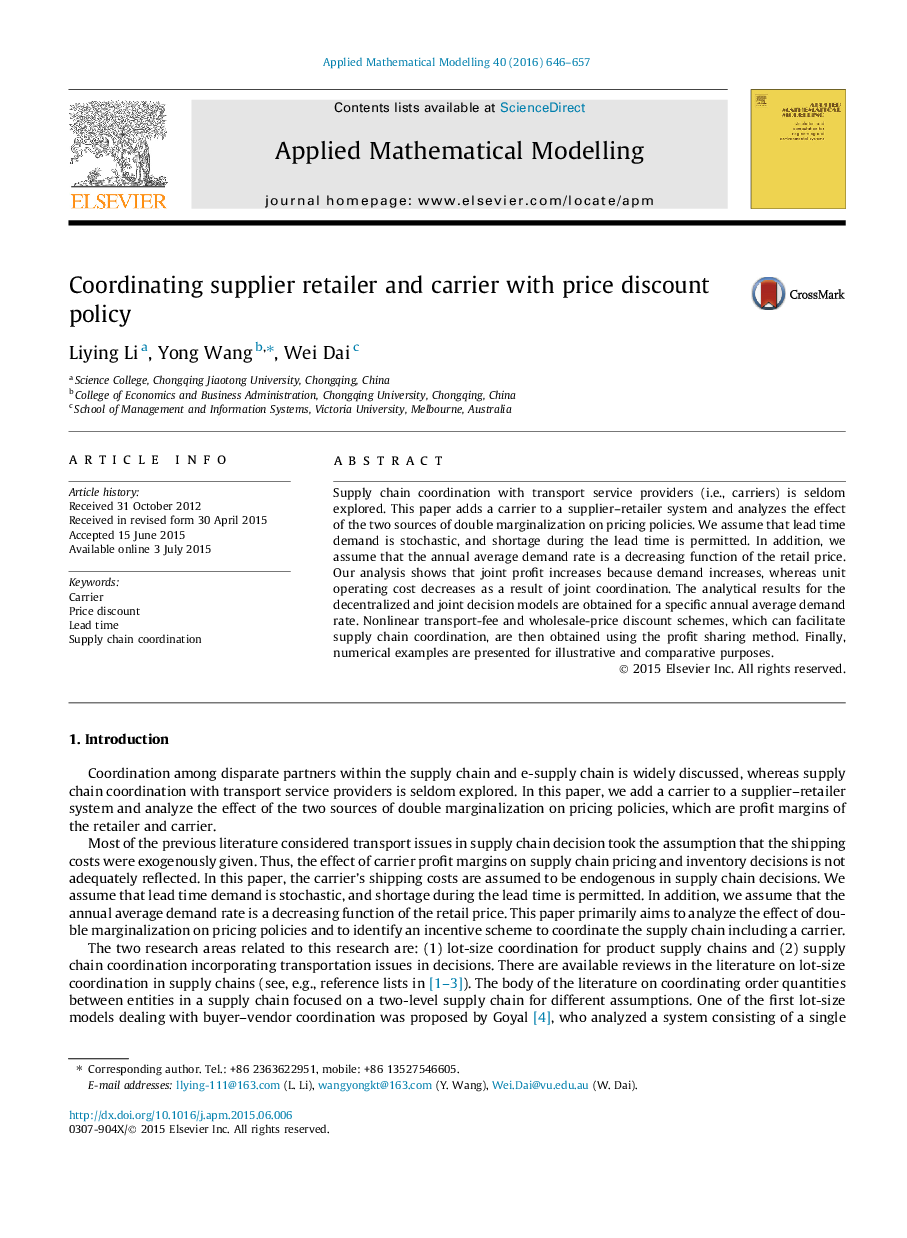| Article ID | Journal | Published Year | Pages | File Type |
|---|---|---|---|---|
| 1703382 | Applied Mathematical Modelling | 2016 | 12 Pages |
Abstract
Supply chain coordination with transport service providers (i.e., carriers) is seldom explored. This paper adds a carrier to a supplier-retailer system and analyzes the effect of the two sources of double marginalization on pricing policies. We assume that lead time demand is stochastic, and shortage during the lead time is permitted. In addition, we assume that the annual average demand rate is a decreasing function of the retail price. Our analysis shows that joint profit increases because demand increases, whereas unit operating cost decreases as a result of joint coordination. The analytical results for the decentralized and joint decision models are obtained for a specific annual average demand rate. Nonlinear transport-fee and wholesale-price discount schemes, which can facilitate supply chain coordination, are then obtained using the profit sharing method. Finally, numerical examples are presented for illustrative and comparative purposes.
Related Topics
Physical Sciences and Engineering
Engineering
Computational Mechanics
Authors
Liying Li, Yong Wang, Wei Dai,
